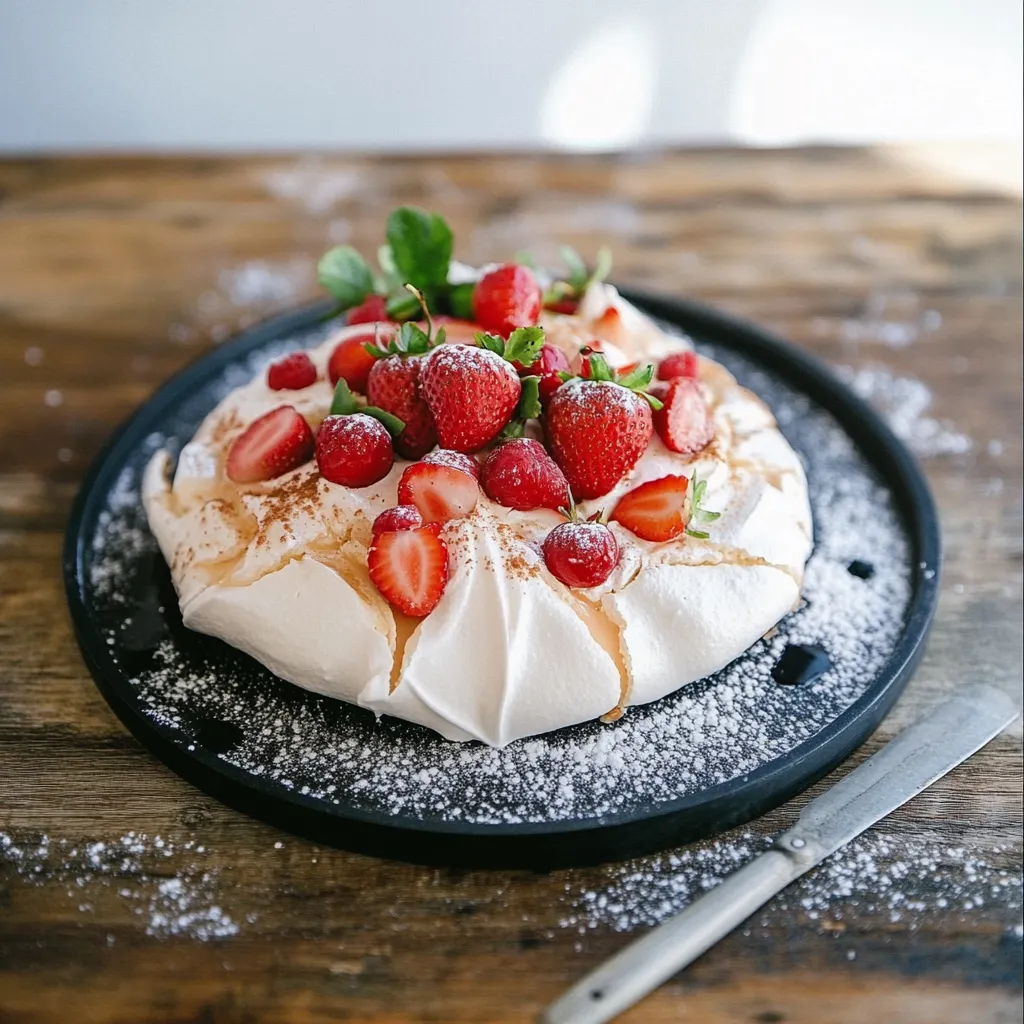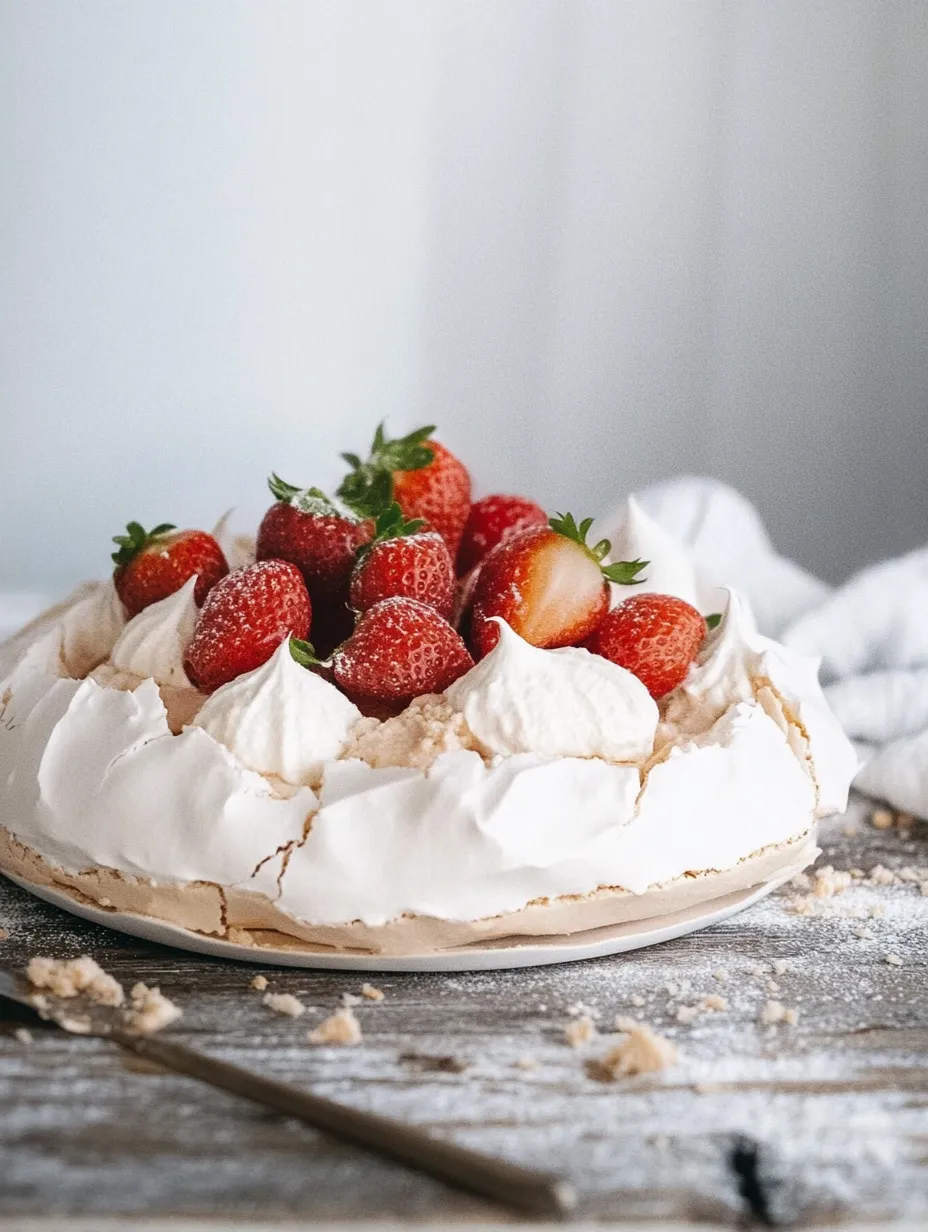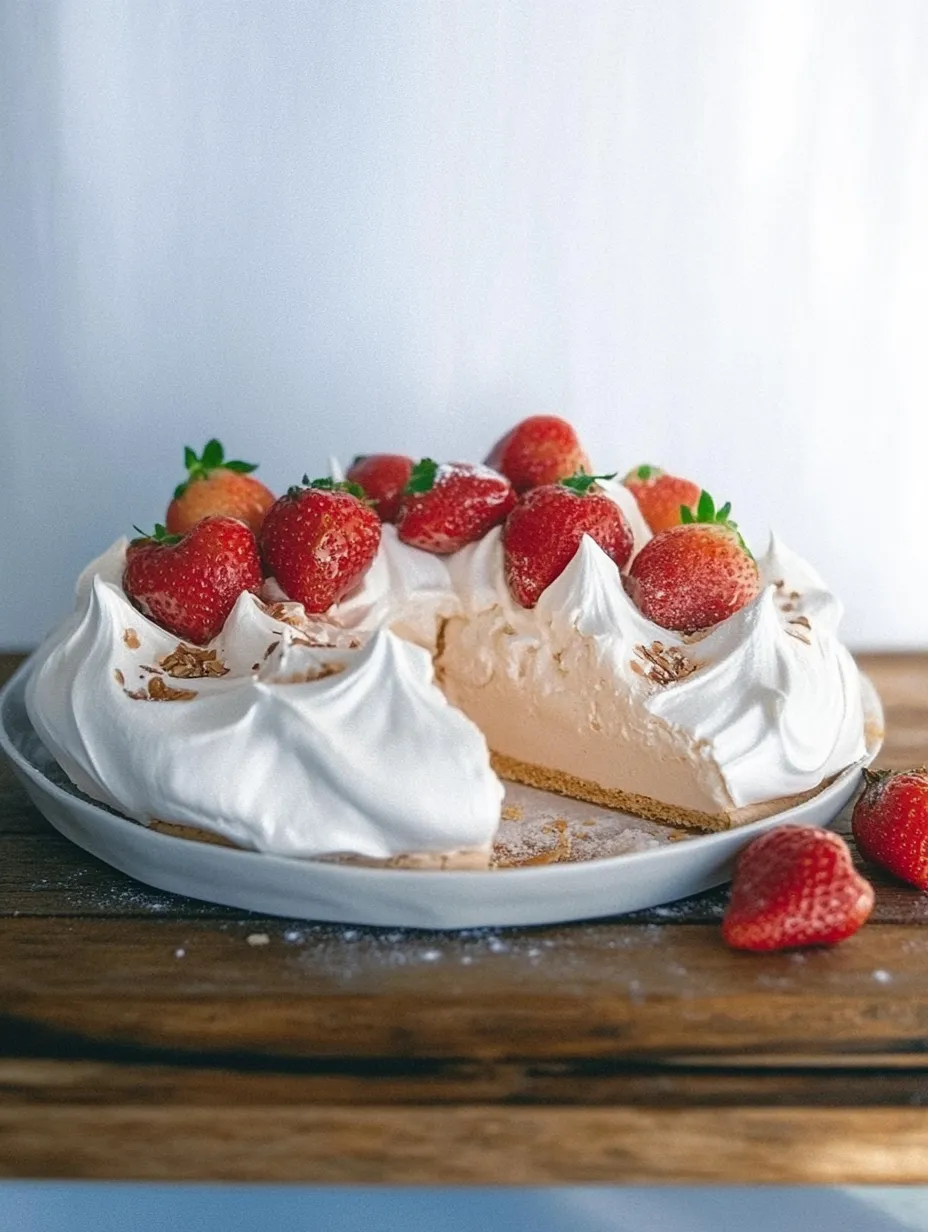 Save
Save
This pavlova recipe creates a cloud-like meringue dessert that's crisp on the outside and marshmallowy on the inside. Each bite melts in your mouth with a perfect balance of sweetness, followed by the freshness of whipped cream and fruit. I've been making this showstopper for family celebrations for years, and it never fails to impress even when my baking skills felt limited.
I first made this pavlova for my mother's birthday when I was a teenager. Despite my nervousness about handling meringue, it turned out perfectly, and now it's become our traditional celebration dessert that everyone requests.
Ingredients
- Egg whites: Provide the structure for your meringue make sure they're at room temperature for maximum volume
- Granulated sugar: Creates the sweet base and helps stabilize the meringue use superfine sugar if available for a smoother texture
- Cornstarch: Adds that signature marshmallowy center that distinguishes pavlova from other meringues
- White wine vinegar or lemon juice: Stabilizes the egg whites and prevents weeping
- Salt: Enhances flavor and strengthens the protein structure
- Vanilla extract: Adds warmth and depth to the otherwise plain meringue
- Heavy cream: Forms the luscious topping that balances the sweet meringue use the highest fat content available
- Fresh fruit: Provides color, acidity, and freshness berries and tropical fruits work particularly well
Step-by-Step Instructions
- Prepare Your Workspace:
- Preheat oven to 325°F/160°C. Draw an 8 or 9 inch circle on parchment paper and flip it over on your baking sheet. Having everything ready before you start whipping the egg whites is crucial as timing matters with meringue.
- Whip To Soft Peaks:
- Start whisking egg whites on high speed until they become foamy and just begin forming soft peaks. This usually takes about 30 to 40 seconds. The whites should look like fluffy clouds and barely hold their shape when you lift the beater.
- Gradually Add Sugar:
- Reduce mixer speed to medium and add sugar one tablespoon at a time, allowing each addition to incorporate fully before adding the next. This slow addition ensures the sugar dissolves properly, preventing a gritty pavlova. Once all sugar is added, increase speed back to high.
- Achieve Stiff Glossy Peaks:
- Continue whisking on high speed until the meringue forms stiff, glossy peaks. You should be able to hold the bowl upside down without the meringue sliding out. Rub a bit between your fingers to check that all sugar has dissolved.
- Add Structure Ingredients:
- Add cornstarch, vinegar, salt, and vanilla. Fold these in gently with a spatula or mix on the lowest speed just until combined. These ingredients give pavlova its signature texture with a crisp shell and soft interior.
- Shape Your Pavlova:
- Gently spoon the meringue onto your prepared parchment paper, using your drawn circle as a guide. Create a slight depression in the center while building up the sides a bit higher. This creates a nest for your toppings later.
- Slow Bake:
- Place in the oven and immediately reduce temperature to 230°F/110°C. Bake for 75 to 90 minutes until the exterior feels dry and has a creamy color. The slow baking dries out the meringue while maintaining that soft center.
- Cool Completely:
- Turn off the oven but leave the pavlova inside with the door closed until completely cool. This gradual cooling prevents drastic temperature changes that cause excessive cracking. Patience is key here.
- Prepare Whipped Cream:
- Whisk heavy cream with sugar and vanilla until soft peaks form. The cream should hold its shape but still have a silky, billowy texture. Avoid overwhipping or you'll end up with butter.
- Assemble Before Serving:
- Spread the whipped cream over the cooled pavlova and arrange fresh fruit on top. Do this step as close to serving time as possible to maintain the contrasting textures.

My favorite part of making pavlova is the transformation that happens in the oven. What goes in as a glossy white cloud comes out as a structured dessert with personality and character. I still remember my grandmother teaching me that the cracks are what give pavlova its beauty.
The Secret To Perfect Pavlova
The key to a successful pavlova lies in the egg whites. They must be completely free from any traces of yolk or fat, which prevent proper whipping. I always crack each egg individually into a small bowl before adding to my mixing bowl to avoid contaminating the batch with a broken yolk. Room temperature egg whites also whip better than cold ones, so leave them out for about 30 minutes before starting.
Troubleshooting Common Issues
Weeping meringue usually happens when sugar hasn't fully dissolved or when the pavlova is exposed to humidity. Make sure to add sugar gradually and test by rubbing meringue between your fingers before baking. If it feels gritty, keep whisking. To combat humidity, store your finished pavlova in an airtight container until ready to top and serve.
Seasonal Fruit Combinations
While you can use any fruit you like, certain combinations create stunning visual and flavor profiles. In summer, try a mix of strawberries, blueberries, and raspberries for a patriotic look. Fall pavlovas shine with sliced figs, poached pears, and a drizzle of honey. Winter calls for blood oranges and pomegranate seeds, while spring welcomes rhubarb compote with fresh strawberries.

The History Behind Pavlova
This dessert was named after Russian ballerina Anna Pavlova during her tour of Australia and New Zealand in the 1920s. Both countries claim to have invented it, creating one of the friendliest culinary disputes in history. The dessert was designed to be as light and airy as her dancing, with a tutulike shape and a delicate appearance that belies its impressive flavor.
Common Recipe Questions
- → What makes a pavlova crisp on the outside?
The crisp exterior of a pavlova is achieved by baking the meringue at a low temperature, allowing it to dry out slowly while retaining a soft center.
- → Why is vinegar or lemon juice used in pavlova?
Vinegar or lemon juice stabilizes the egg whites and helps create a chewy interior by preventing the meringue from collapsing.
- → Can I make pavlova in advance?
Yes, the meringue can be made a few days ahead and stored in an airtight container. Add whipped cream and fruit just before serving to keep it fresh.
- → What fruits pair well with pavlova?
Berries, passion fruit, kiwi, and pineapple are popular choices. Their tartness complements the sweet meringue and cream.
- → How do I know when my pavlova is baked properly?
The pavlova is ready when it's creamy in color, crisp on the outside, and it releases easily from the parchment paper. Let it cool completely in the oven to avoid cracking.
